Gone are the days when traditional classrooms were the only avenue for learning. Enter the era of virtual classrooms, where education transcends geographical boundaries and time constraints, paving the way for synchronous online learning.
But what exactly is this new educational buzzword, and how does it revolutionize the way we acquire knowledge? Join us as we delve into synchronous online learning and witness how it seamlessly blends technology with pedagogy to create an immersive, interactive, and engaging educational experience.
According to a report by Statista, The Online Learning Platforms market is poised for extraordinary growth, with a projected user base of a staggering 0.92 billion users by 2027. The upward trajectory is evident as user penetration climbs from 9.5% in 2023 to an anticipated 11.6% by 2027.
This rapid expansion isn’t just confined to user numbers; the financial aspect of the industry is equally promising. The average revenue per user (ARPU) is projected to reach an impressive US$78.30, reflecting the immense value learners and educators alike place on these platforms.
What does Synchronous online learning mean?
Synchronous online learning refers to a mode of education where students and instructors participate in the learning process simultaneously, regardless of their physical locations. In this approach, real-time communication and interaction take place through digital platforms, creating a virtual classroom experience akin to traditional face-to-face learning environments.
Unlike asynchronous online learning, where students access pre-recorded lectures and materials at their own pace, synchronous learning requires learners to attend live sessions at scheduled times. These live sessions can take various forms, such as webinars, video conferences, virtual classrooms, or live-streamed lectures, among others.
It includes chat features, audio and video communication, shared whiteboards, polling, and breakout rooms for group discussions.
Some of the key characteristics of synchronous online learning include:
- Real-time Interactions: Learners and educators engage with each other in real-time, enabling immediate feedback, clarification of doubts, and lively discussions.
- Structured Schedule: Participants follow a set schedule for attending live sessions, creating a sense of routine and accountability.
- Collaboration: Group activities, breakout sessions, and team projects are often incorporated to promote collaboration and teamwork among students.
- Live Instruction: Instructors deliver content, lectures, and presentations live, enhancing the sense of instructor presence and personalisation.
- Immediate Support: Learners can seek immediate assistance from instructors, making it easier to address queries and challenges promptly. For students needing help with assignments or academic writing, using an essay writer service can be a valuable resource, ensuring they receive expert guidance while keeping up with the demands of synchronous learning.

What Is Synchronous Online Learning Like?
Synchronous online learning encompasses various interactive and real-time methods of education that enable students and instructors to participate simultaneously, fostering immediate communication, engagement, and collaboration. Let’s find out each of these points in detail:
1. Webinars:
Webinars are interactive online seminars where an expert or presenter delivers content to a large audience in real-time. Participants can engage through features like live chat, Q&A sessions, and polls. Webinars are particularly useful for disseminating information, conducting training sessions, and hosting interactive discussions with a geographically dispersed audience.
2. Live Streams:
Live streams involve broadcasting real-time video content over the internet. This can be used for events, conferences, performances, or educational purposes. Participants can access the stream simultaneously, and interaction is often facilitated through chat features or social media platforms.
3. Live Virtual Classes:
Live virtual classes replicate the traditional classroom experience in an online setting. Instructors conduct real-time lessons using video conferencing or virtual classroom platforms. Students can interact with the teacher and their peers, participate in discussions, and receive immediate feedback, creating an engaging and dynamic learning environment.
4. Virtual Classrooms:
Virtual classrooms are digital spaces that mimic physical classrooms, providing a range of interactive tools like video conferencing, chat features, whiteboards, and document sharing. Educators can deliver lectures, facilitate group activities, and promote collaborative learning, fostering a sense of community among students.
5. Online Chat Sessions:
Online chat sessions enable real-time text-based communication between students and instructors or among peers. These sessions are useful for quick discussions, asking questions, and brainstorming ideas. Chat sessions encourage instant problem-solving and enhance communication between participants.
6. Simulations and Virtual Labs:
Simulations and virtual labs offer interactive learning experiences that allow students to apply theoretical knowledge in practical scenarios. They simulate real-life situations or laboratory experiments, enabling learners to experiment, make decisions, and observe outcomes in real-time.
7. Live Online Assessments:
Live online assessments are tests or quizzes conducted in real-time through digital platforms. Instructors can monitor students’ progress and responses instantly, providing immediate feedback. Live assessments enhance accountability and allow educators to gauge students’ understanding effectively.
8. Guest Speaker Sessions:
Guest speaker sessions involve inviting subject matter experts or professionals to present to students during a live event. These sessions enrich the learning experience by providing unique insights, real-world perspectives, and practical applications of the course material.
9. Synchronous Peer-to-Peer Learning:
Synchronous peer-to-peer learning involves students collaborating and learning together in real-time. This can occur through group discussions, team projects, or peer-led presentations, encouraging active engagement and the exchange of diverse ideas.
10. Video Conferencing:
Video conferencing allows real-time audio and video communication between participants, enabling face-to-face interactions, just like in physical meetings. It plays a vital role in synchronous online learning by facilitating live discussions, virtual meetings, and fostering a strong sense of connection among learners and instructors.
How does Synchronous online learning work?
Synchronous online learning works by facilitating real-time interactions between instructors and students, recreating the classroom experience in a virtual setting. Here’s a step-by-step explanation of how it typically operates:
1. Virtual Classroom Setup:
Educators use dedicated virtual classroom platforms that offer various tools for live communication and collaboration. These platforms may include video conferencing, chat features, shared whiteboards, document sharing, and more, creating an immersive digital learning environment.
2. Scheduling and Invitations:
Instructors set a schedule for live sessions and send out invitations to students, providing them with the date, time, and access details for the virtual classroom. Some platforms may integrate with learning management systems (LMS) to streamline this process.
3. Joining the Session:
At the scheduled time, students log in to the virtual classroom using the provided link or credentials. They are greeted by the instructor and fellow classmates, creating a sense of belonging and community
4. Live Interaction:
Once the session starts, the instructor engages with the students, setting the tone for the lesson. Students can respond, ask questions, or contribute to discussions using video, audio, or text-based communication.
5. Presentations and Content Delivery:
Instructors may use multimedia AI presentations, slides, videos, or other content to deliver the lesson. They can share their screen, enabling students to view the material in real-time. With the advent of advanced technologies, utilizing the best AI for presentations can further enhance the teaching experience by providing dynamic and interactive visuals, aiding in better comprehension and engagement among students.
6. Discussions and Q&A:
Synchronous learning encourages active participation and discussions. Students can ask questions, share opinions, and engage in group discussions, promoting critical thinking and a deeper understanding of the subject matter.
7. Group Activities:
To promote collaboration, instructors may organize group activities or breakout sessions where students work in smaller teams on tasks or projects. Virtual whiteboards or collaborative document editing tools facilitate these activities.
8. Assessments and Quizzes:
Instructors can conduct live assessments or quizzes during the session to gauge students’ understanding of the material. They may use polling features or separate assessment tools integrated into the virtual classroom platform.
9. Wrap-up and Follow-up:
As the session nears its end, the instructor summarizes the key points covered and ensures that all questions are addressed. They may provide additional resources or assign homework for further learning.
10. Follow-up and Resources:
After the session, instructors can share resources, recorded videos of the class, or additional reading materials through the LMS or email. This allows students to review the content and reinforce their learning.
Benefits of Synchronous Online Learning:
1. Better Feedback Loop:
Synchronous online learning enables immediate and real-time feedback from instructors to students and vice versa. This instant feedback fosters a deeper understanding of the subject matter, helps identify areas of improvement, and encourages continuous learning and growth.
2. Better Chances to Build a community:
Through live virtual classes, webinars, and online chat sessions, students can interact with their peers and instructors in real-time. This fosters a sense of belonging and creates a supportive learning community, promoting collaboration and knowledge-sharing.
3. Learning from Anywhere:
Synchronous online learning breaks down geographical barriers, allowing learners to participate in classes or training sessions from anywhere in the world. This flexibility in accessing educational content enhances accessibility and opens up learning opportunities for individuals who might not have access to traditional education.
4. Real-Time Interaction:
One of the significant advantages of synchronous online learning is the ability to engage in real-time interactions with instructors. Students can ask questions, seek clarification, and participate in discussions just as they would in a physical classroom, creating an engaging and dynamic learning experience.
5. Structured Learning Environment:
Synchronous online learning provides a structured approach to education with scheduled classes and live sessions. This regularity helps students establish a learning routine, stay organized, and manage their time effectively, promoting discipline and accountability.
6. Personalized Learning Experience:
Instructors can adapt their teaching methods and content based on immediate feedback and individual needs of students. Synchronous learning allows educators to personalize their approach, address specific challenges, and cater to diverse learning styles, leading to a more effective learning experience.
7. Instant Clarifications:
During live sessions, students can seek instant clarifications on concepts they find challenging or unclear. This immediate access to answers promotes a deeper grasp of the material and reduces the chances of misconceptions persisting.
Synchronous Learning Vs Traditional Learning
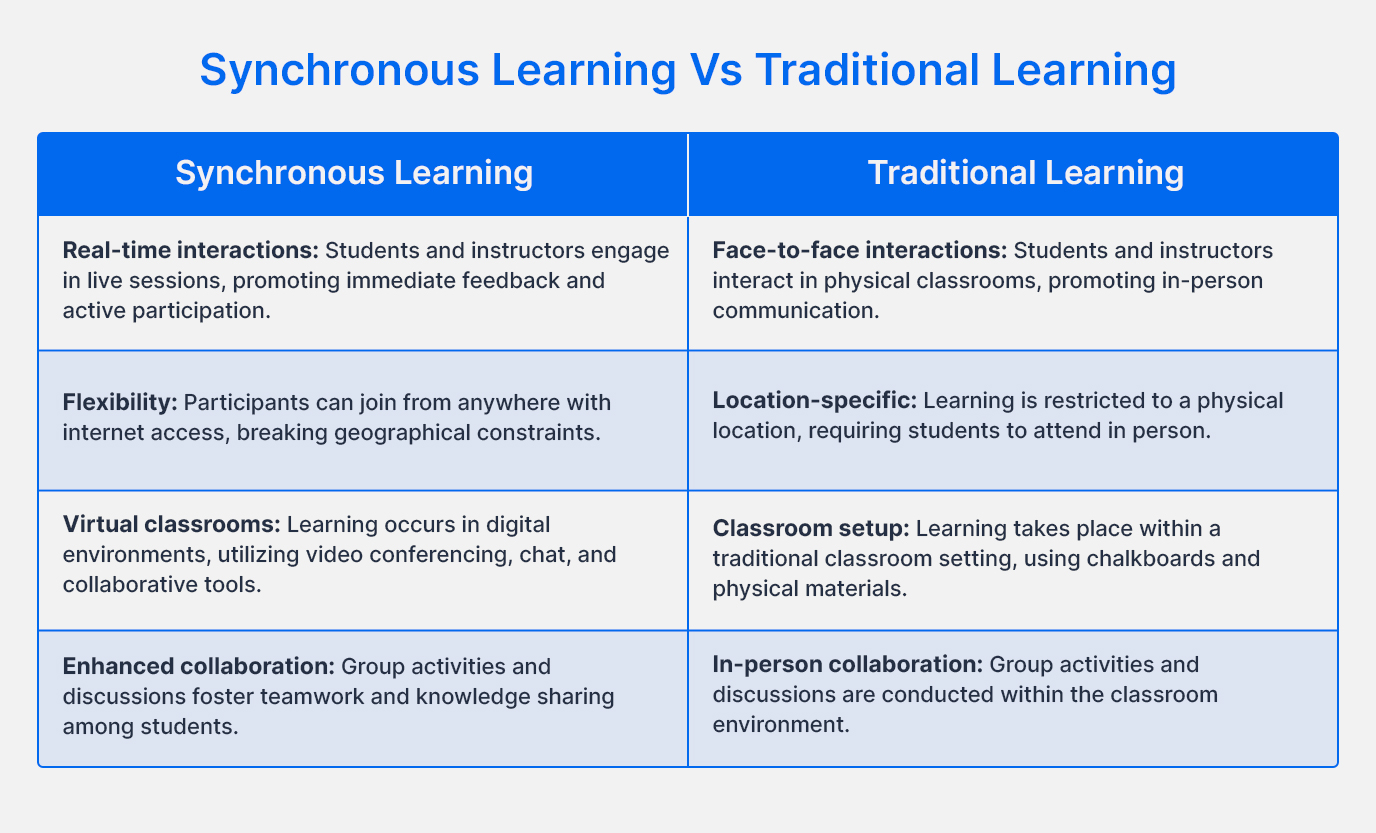
What is a synchronous online learning platform?
A synchronous online learning platform is a digital environment that facilitates real-time, interactive education between instructors and learners. It allows for live virtual classes, webinars, and other types of online sessions where participants can engage in simultaneous communication, just like in a traditional classroom setting.
Building a Synchronous eLearning Platform – Step by Step Procedure:
1. Set an Objective:
Determine the purpose and goals of your synchronous eLearning platform. Define the target audience, subjects, or topics you want to cover, and the level of interactivity you aim to provide.
2. Select Your Platform:
Choose a suitable eLearning platform that supports synchronous learning features. Look for one with video conferencing, chat, and other interactive tools necessary for real-time communication and collaboration.
Muvi eLearning portal supports virtual learning and communication needs whether in a classroom or at home. Handle online programs, remote learning, live coaching, and certification programs for students. Create a virtual classroom for online teaching and group assignments.
3. Select Your Template:
Choose a visually appealing and user-friendly template for your platform. A well-designed template enhances the overall user experience and makes navigation intuitive.
4. Customize Your Platform:
Customize the platform to align with your brand identity. Add your logo, brand colors, and other branding elements to create a consistent and professional look.
5. Create Relevant Content:
Develop high-quality content tailored to your target audience and learning objectives. This may include live class schedules, instructional materials, multimedia resources, and interactive activities.
6. Upload Your Contents:
Upload the content to the platform, ensuring it is well-organized and accessible to users. Ensure that your platform supports various file formats, such as videos, PDFs, and presentations.
7. Create a Playlist:
Organize your content into playlists or courses based on topics or themes. This helps learners navigate through the material and maintain a structured learning experience.
8. Select Your Monetization Model:
Decide on a monetization strategy for your eLearning platform. You can offer paid courses, subscription-based access, or a combination of both. Ensure your platform supports secure payment gateways.
9. Test and Launch:
Thoroughly test the functionality of your synchronous eLearning platform. Check for any technical issues, usability problems, or content errors. Once everything is in order, launch your platform to the public.
10. Market Your Platform:
Promote your eLearning platform to reach your target audience. Utilize digital marketing strategies, social media, email campaigns, and partnerships with relevant influencers or organizations to increase visibility and attract learners.
Muvi One’s eLearning Solution for synchronous learning
With Muvi One’s eLearning Module, you can embark on an exciting journey of building your very own eLearning platform. Offering a comprehensive array of tools and features, Muvi One’s eLearning platform empowers you to effortlessly launch and oversee your eLearning website and mobile app.
Through Muvi One ‘s eLearning module’s intuitive interface, course creation and organization become a seamless experience. You can effortlessly define course modules, lessons, quizzes, and assessments, strategically arranging them into logical sequences for optimal learning outcomes. Moreover, the platform offers the flexibility to set course prerequisites, issue completion certificates, and track learners’ progress effectively.
With Muvi One at your disposal, the possibilities for crafting a successful eLearning venture are boundless. Unleash your creativity and educational expertise, and watch as your platform thrives in the world of online learning. Take a free trial to know more!
FAQs
What is synchronous online learning?
Synchronous online learning refers to a mode of education where students and instructors participate in the learning process simultaneously, regardless of their physical locations. In this approach, real-time communication and interaction take place through digital platforms, creating a virtual classroom experience akin to traditional face-to-face learning environments.
How does synchronous online learning differ from asynchronous learning?
Synchronous learning refers to real-time learning experiences where instructors and learners interact simultaneously. In this model, all participants are required to be online and engaged at the same time. Asynchronous learning, on the other hand, refers to a self-paced approach where learners can access and engage with the course materials at their convenience. In this model, the interactions between instructors and learners do not occur simultaneously.
What are the key components of synchronous online learning?
- Live Sessions
- Video Conferencing
- Chat and Messaging
- Polls and Quizzes
- Screen Sharing
- Whiteboard and Annotations
- Breakout Rooms
What are the benefits of synchronous online learning?
- Real-Time Interaction
- Active Participation
- Collaboration and Networking
- Structured Learning Environment
- Real-Time Assessments
- Personalized Support
- Immediate Feedback
- Enhanced Social Presence
Can I ask questions during synchronous online classes?
Many video conferencing platforms used for synchronous learning have chat features that allow you to type questions or comments in real-time. Instructors often monitor the chat and respond to questions during the session.

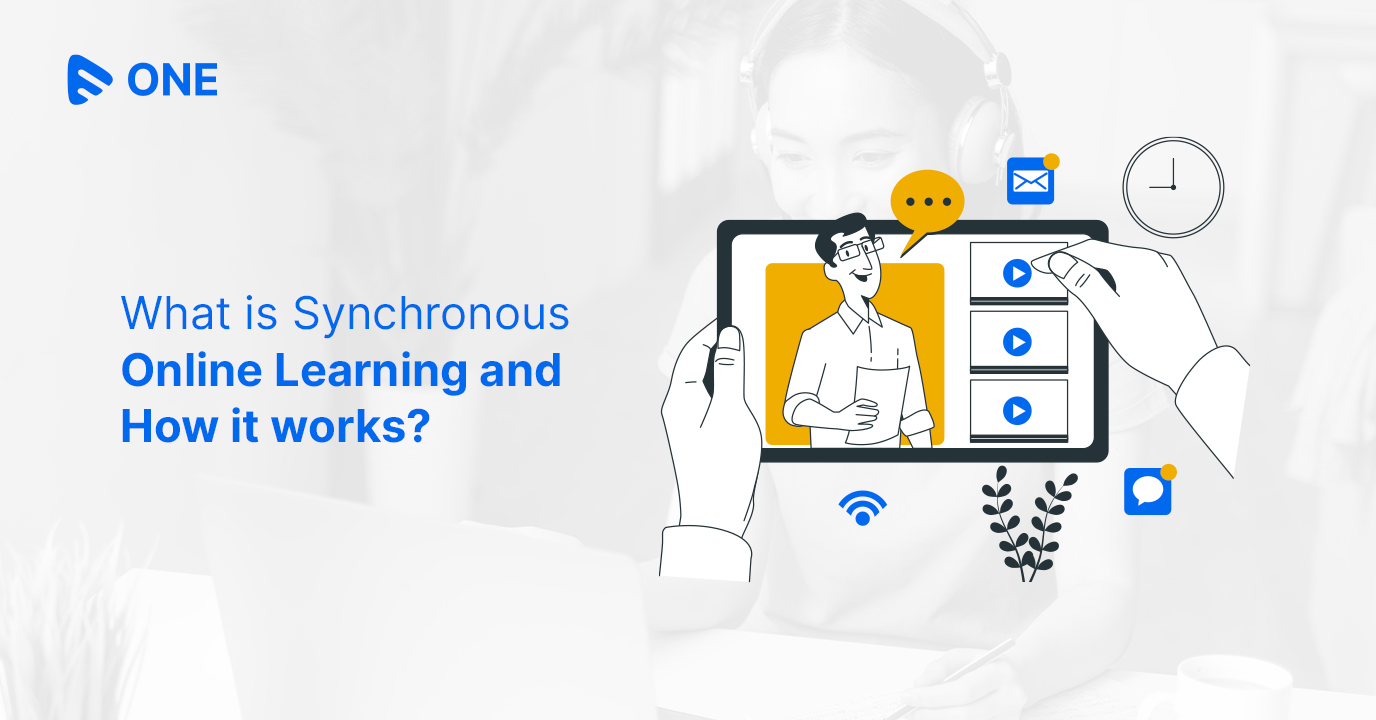











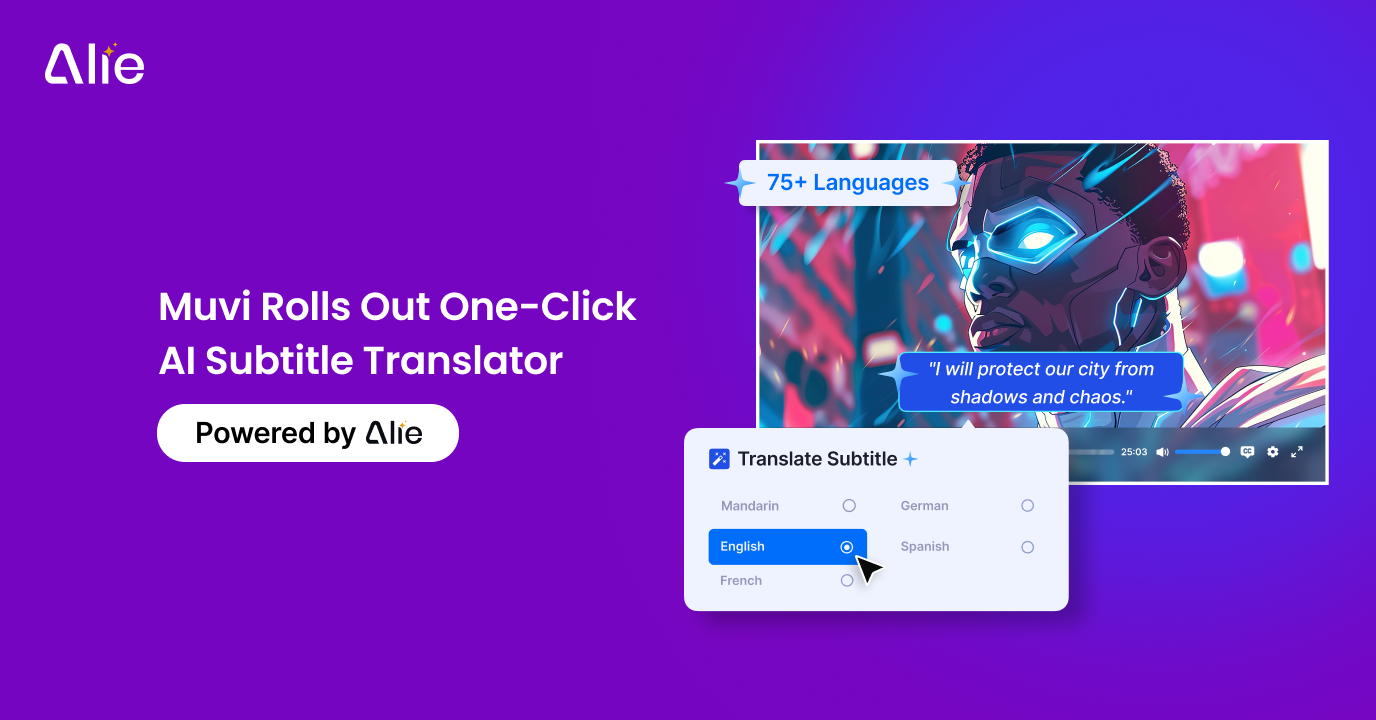
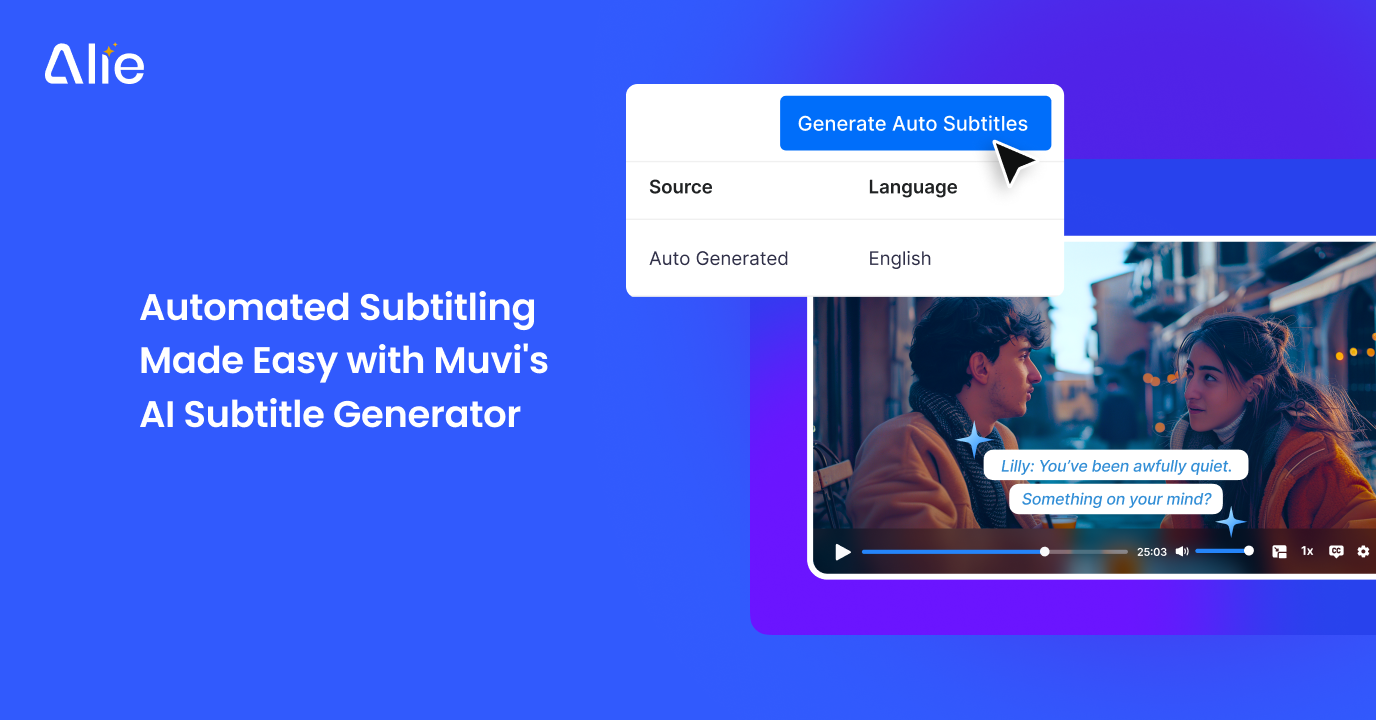
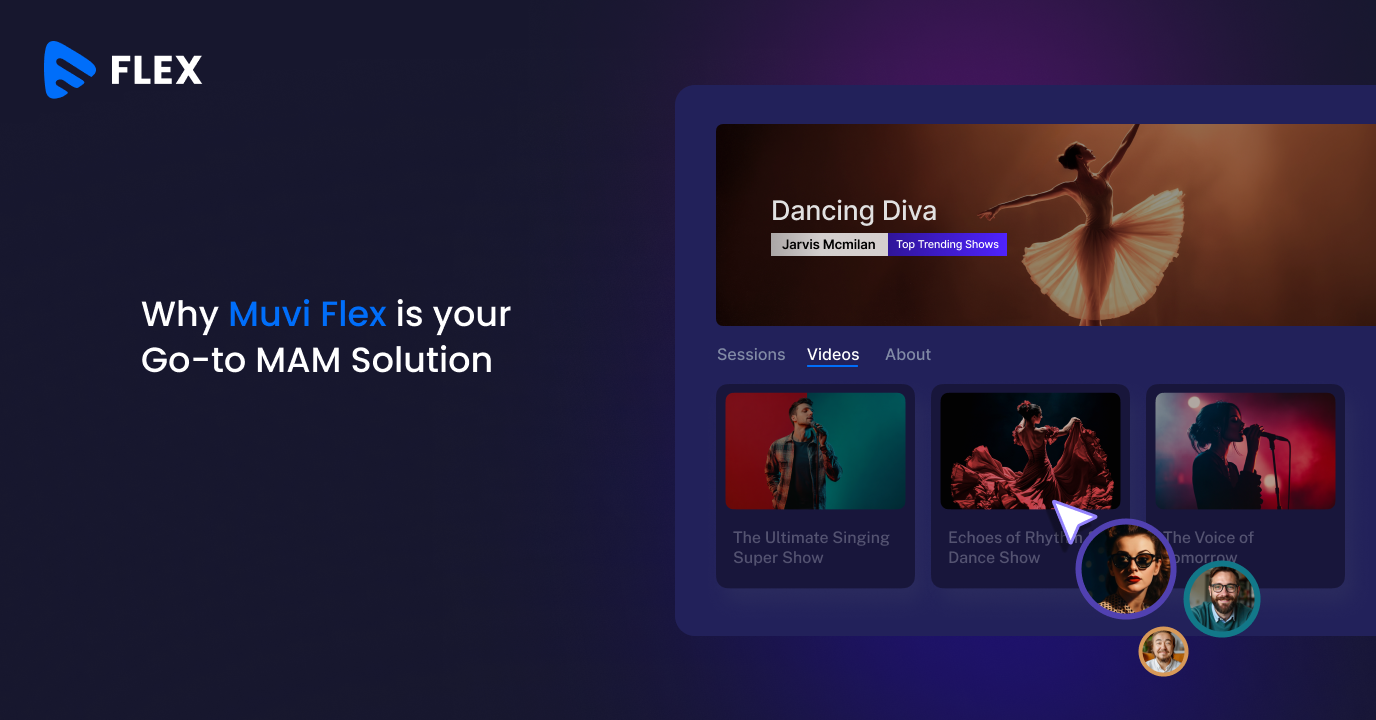



Add your comment